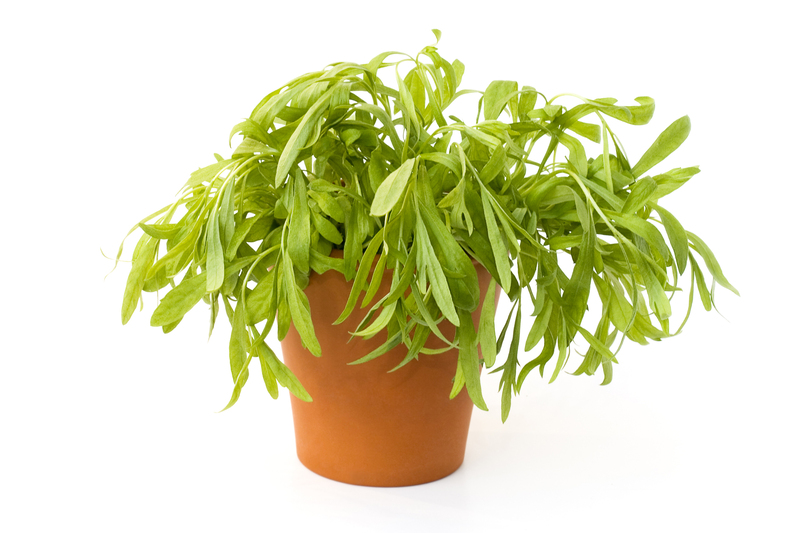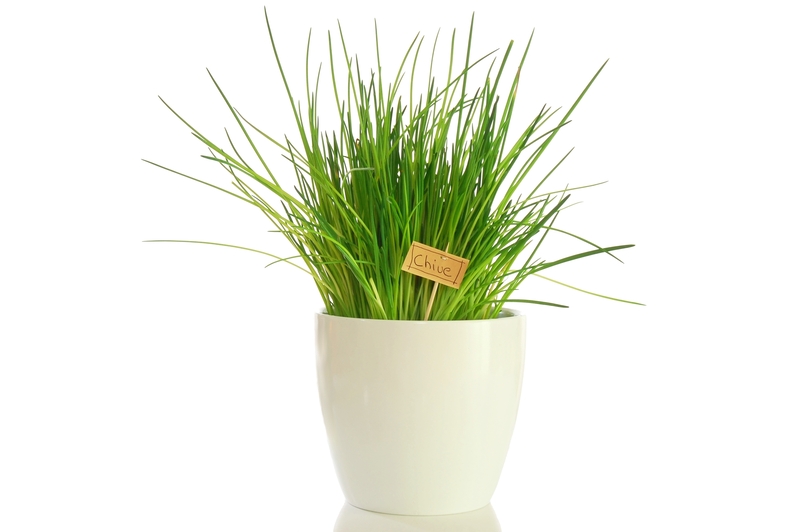Create an Inviting Garden Oasis for Children to Explore
Posted on 11/06/2025
Create an Inviting Garden Oasis for Children to Explore
Transforming your outdoor space into a garden oasis for children is more than just planting flowers--it's about crafting a vibrant, interactive environment that sparks imagination, encourages adventure, and inspires a connection with nature. In this comprehensive guide, learn how to design, build, and maintain a safe and magical kids' garden haven that promotes exploration, learning, and endless fun.
Why a Garden Oasis for Children?
Today's digital age means children often spend more time indoors, but creating an inviting garden environment for kids offers innumerable benefits:
- Physical activity: Encourages movement, balance, and exercise.
- Sensory development: Engages senses through diverse textures, scents, and colors.
- Imagination and creativity: Sparks role-play, storytelling, and discovery.
- Education: Provides hands-on learning in science, ecology, and responsibility.
- Mental well-being: Reduces stress and cultivates a sense of wonder.
By creating a child-friendly garden sanctuary, you give children a safe space to explore, learn, and grow outside.

Planning Your Children's Garden Oasis
Before digging in, thoughtful planning will ensure your kids' garden retreat is both inviting and practical.
Consider Safety First
- Keep sightlines clear: Design the space so supervising adults can easily monitor children.
- Avoid toxic plants: Stay away from oleander, foxglove, and other dangerous varieties.
- Use soft landings: Ground cover like grass, mulch, or rubber mats cushion falls.
- Protect from sun and hazards: Consider shade sails, fencing, and secure water features.
Define Zones for Play and Discovery
- Active areas: Space for running, climbing, and group games.
- Quiet zones: Cozy nooks for reading, observing nature, or imaginative play.
- Planting patches: Let children dig, plant, and harvest their own veggies or flowers.
- Sensory spots: Engage each sense with different textures, sounds, and scents.
Elements to Include in a Magical Kids' Garden Oasis
A garden escape for children brims with elements that delight and entice exploration. Consider these ideas:
1. Whimsical Pathways
Winding paths made from stepping stones, wooden rounds, or pebbles invite adventure. Let kids help design patterns or find hidden treasures along the way. Adding curves instead of straight lines encourages a sense of mystery and discovery.
2. Secret Hideouts
Teepees, willow tunnels, or bean pole tents create enchanting spaces for children to imagine, hide, and dream. Clustered evergreens or flowering shrubs can also form living forts that inspire hours of play.
3. Sensory Gardens
Engage all five senses with thoughtfully chosen plants and materials:
- Touch: Include lamb's ear, fountain grass, or succulents with unique textures.
- Scent: Plant lavender, mint, or night-blooming jasmine for delightful fragrances.
- Sound: Bamboo rustles in the breeze, while ornamental grasses or wind chimes add gentle music.
- Taste: Edibles like strawberries, cherry tomatoes, and peas let kids enjoy a pick-and-eat experience.
- Sight: Bright blooms, ornamental foliage, and colorful garden decor capture attention.
4. Edible Exploration
A children's kitchen garden introduces little ones to growing, harvesting, and tasting their own produce. Start with easy crops:
- Sunflowers
- Pumpkins
- Snap peas
- Radishes
- Strawberries
Give each child a small patch or raised bed--this fosters responsibility and pride in their mini oasis.
5. Miniature Worlds
Create fairy gardens or dinosaur jungles using containers or a patch of soil, pebbles, moss, and themed figurines. These tiny imaginative spaces become launching pads for storytelling and creative play.
6. Art and Expression Spaces
Incorporate weatherproof chalkboards, mural walls, or outdoor easels. Let kids paint garden rocks, make wind spinners, or create natural sculptures from sticks and leaves for a truly personal touch.
7. Water Features
Sound and play with water fascinate children. Consider:
- Splash zones: Kid-sized fountains or shallow splash pads.
- Mud kitchens: Encourage messy mud play with outdoor sinks, pans, and utensils.
- Butterfly puddling areas: Shallow dishes filled with stones and water attract butterflies and provide learning opportunities.
8. Interactive Wildlife Zones
Encourage a love for animals and insects by adding:
- Bird feeders and birdbaths
- Pollinator plants for butterflies, bees, and hummingbirds
- Bug hotels or log piles to shelter beneficial insects
Teach children to observe and care for local wildlife, deepening their bond with the environment.
Choosing Child-Friendly Garden Plants
Select safe, non-toxic plants with varied textures, heights, and colors. Some top choices include:
- Marigolds
- Sunflowers
- Nasturtiums (edible flowers)
- Strawberries
- Snapdragons
- Lamb's ear (soft, fuzzy leaves)
- Lavender
- Herbs such as basil, mint, and thyme
Capitalize on plants that attract butterflies and pollinators for added ecological value. Always avoid species that are toxic to humans or pets.
Design Tips to Make Your Garden Oasis Inviting
- Add color everywhere: Use painted pots, vibrant garden flags, or DIY wind spinners for brightness year-round.
- Vary heights and layers: Build interest with raised beds, step gardens, or hanging baskets at child-height.
- Offer movable objects: Logs, stones, and sticks for building forts or fairy houses fuel creativity.
- Leave space to grow: Plan pathways wide enough for running and play as plantings mature.
- Install low fencing or hedges: Demarcate the oasis and promote a sense of adventure while staying safe.
Create Shade and Comfort Zones
Install shade sails, pergolas, or plant fast-growing trees for respite from the sun. Add garden benches, hammocks, or picnic tables for relaxing, crafting, or snack times.
Easy Projects to Enrich Your Kids' Garden Retreat
DIY Stepping Stones
- Mix fast-setting concrete and pour into pie tins.
- Press in glass beads, shells, or handprints.
- Let dry and place along winding paths.
Upcycled Fairy Gardens
- Repurpose old wheelbarrows, plant pots, or wooden crates.
- Add soil, moss, tiny figurines, and miniature fences.
- Let children rearrange and refresh designs each season.
Homegrown Bean Teepees
- Circle three to six bamboo poles and tie at the top.
- Plant pole beans or morning glory seeds at the bases.
- Watch as vines grow, creating a natural, shady fort to play in.
Butterfly Water Station
- Fill a shallow pan or plate with sand and smooth stones.
- Add water until it just moistens the sand.
- Place in a sunny, sheltered location. Kids can watch butterflies stop to drink!
Encouraging a Lasting Love of Nature
A child's garden sanctuary is the perfect space to foster curiosity and an appreciation for the outdoors. Some ways to deepen this connection:
- Keep a nature journal for kids to draw plants, leaves, bugs, and birds they encounter.
- Host garden scavenger hunts looking for unusual leaves, colors, shapes, or textures.
- Set up a weather station with a rain gauge, windsock, and thermometer to learn about climate and seasons.
- Let kids try composting kitchen scraps or caring for a worm bin to learn about sustainability and life cycles.
- Visit local gardens or parks together to gather new ideas for your own backyard oasis.
Maintaining a Playful Children's Garden
For your garden oasis for kids to remain beautiful, functional, and safe, establish easy routines:
- Frequent checks for potential hazards, such as sharp tools, damaged structures, or toxic plants.
- Involve children in watering, weeding, and harvesting to build responsibility.
- Rotate play elements and update planting areas by season for renewed interest.
- Encourage respect for nature by teaching gentle handling of plants and critters.
- Keep paths clear and surfaces swept to prevent accidents.

Frequently Asked Questions About Children's Garden Oases
Q1: How much space do I need for a kids' garden haven?
You don't need a huge yard--even a small plot, balcony, or patio container garden can become an inviting space for children if thoughtfully designed. Focus on sensory plants, creative play elements, and safe, accessible layouts.
Q2: What if I have a concrete backyard?
Use raised beds, large pots, vertical planters, and moveable garden elements. Chalk art, container fairy gardens, and portable sand/mud play stations are perfect for hardscaped areas.
Q3: How can I make my garden safe for toddlers?
Install gates or low fences, use non-toxic plants, provide soft mats or mulched surfaces, and avoid water or climbing structures too advanced for toddlers. Supervision is always key.
Q4: How can I encourage my child to spend more time in the garden?
Give them ownership of a special plot, let them choose or plant their favorites, and involve them in fun garden projects. Organize day and night playtimes--stargazing or glow-in-the-dark games add new excitement!
Conclusion: Nurturing Young Explorers in the Garden
Creating an inviting garden oasis for children to explore doesn't require a landscape design degree--just a bit of creativity, safety awareness, and childlike wonder. With winding paths, sensory-rich spaces, secret hideouts, and edible delights, you'll cultivate not just plants but also lasting memories.
Whether your space is large or small, a thriving children's outdoor sanctuary fosters hands-on learning, emotional growth, and joyful discovery for years to come. Start planning your kids' garden retreat today and watch their love for nature--and imagination--bloom!

